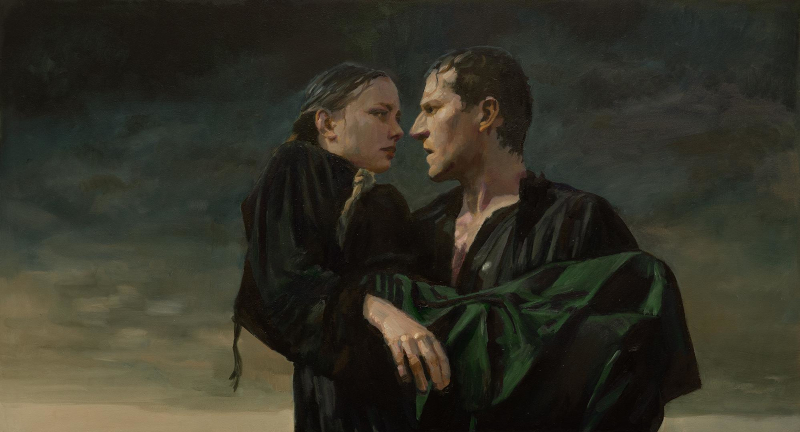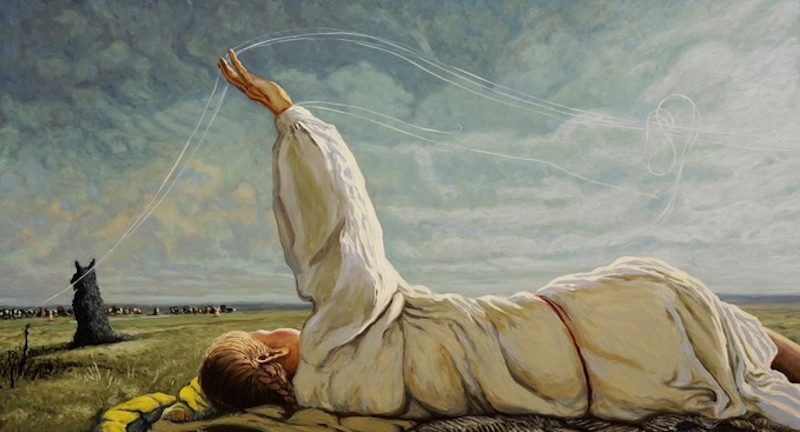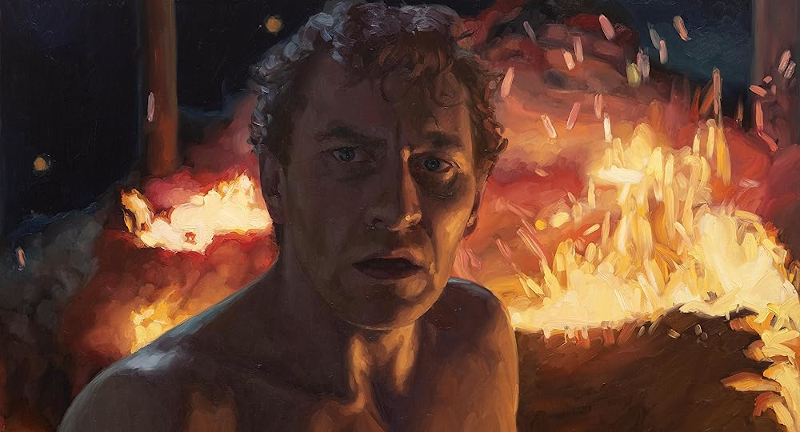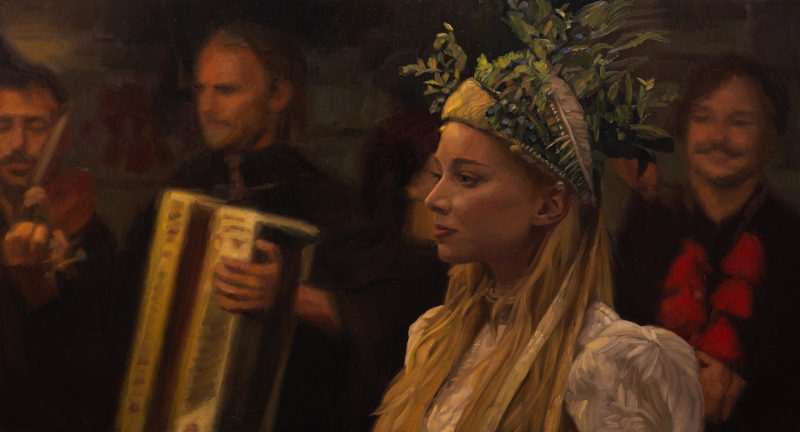Directors – DK Welchman, Hugo Welchman – 2023 – Poland, Serbia, Lithuania – Cert. 15 – 114m
****1/2
A rural drama of romance, adultery and inheritance is expressed through the remarkable, foot-in-two-camps medium of live action filmmaking turned into animated painting – out in UK cinemas on Friday, December 8th
A small rural village in the early 20th Century. Young woman Jagna Paczesiówna (Kamila Urzędowska) is in love with Antek Boryna (Robert Gulaczyk). Unfortunately, not only is Antek already married to Hanka (Sonia Mietielica), who is fed up with his philandering, but also the latter’s father Maciej (Mirosław Baka), who is the richest person in the village, is widowed and wants Jagda to marry him – against her will but in line with that of her parents, who know a good thing when they see it. Alas, after the marriage, she carries on with Antek and things slowly go from bad to worse.
It’s gripping if harrowing stuff and would probably work well enough in live action, although it might not look that dissimilar to many other period costume dramas. It can occasionally be hard to keep track of who’s who, which I suspect is down to the script, an adaptation of a 1906 novel originally written as four volumes covering one year through the seasons Autumn, Winter, Spring and Summer, a trajectory also followed by the screenplay.

Indeed, as far as live action goes, the novel has been filmed twice before in Poland, once in 1922 in the silent era and again as a TV miniseries in 1972.
This new film version comes from the same husband and wife team who gave the world the widely acclaimed Loving Vincent (2017), which told the story of artist Vincent van Gogh through the medium of animated paintings.
As someone with a great love for both Van Gogh’s paintings and the art of animation, and desperately wanting to like that earlier film, I found myself in a quandary. Because the film attempted, to all intents and purposes, to create a moving image, van Gogh painting, I felt it had set itself an impossible task. Van Gogh was dead, and the production team were effectively asking a group of artist-illustrators to produce numerous frames of Vincent so that the painting would move. But they were not, themselves, Vincent van Gogh. For me, this project was doomed to fail from its very inception.
Fast-forward to The Peasants which, while employing similar animated oil painting techniques, is actually very different in conception. Forget animation for a second (which you couldn’t really do with Loving Vincent because animating the artist’s paintings was the very reason the film existed): the new film is to all intents and purposes a costume drama adaptation of the eponymous Polish novel about life in a small village around the 1900s brought to life with actors and sets. Now, the directors Welchman clearly both love and have established their proficiency in the medium of animated oil painting with Loving Vincent, but this time round, they are not trying to imitate (or, if you will, actually be) the great artist responsible for such work, rather – although they have referenced such young Polish artists as Józef Chełmoński, Ferdynand Ruszczyc and Leon Wyczółkowski – they are using that medium as a vehicle to tell their story. Shorn of those pitfalls that beset their previous film, this new one seems to me far more successful.

Unlike most animated films where, if actors are used, they tend to supply the voices while the visual side of bringing the characters to life on the screen falls to the animators, this is a production essentially shot as live action in the first instance on largely undressed (i.e. green screen) sets using costumed actors who interact in much the same way that they would on a live action shoot. Although the art of the cinematographer must also play a considerable part in this process, all this visual work, captured as moving images, is then effectively painted over, frame by frame, by the animators. (There were apparently also walk-through, computer mock-ups of the locations to give the cast an idea of what they were working with.) so this is not animation accompanied by voice acting as usual, but rather by complete performances by actors as in live action film, even if the final result is (or at least appears to be) animated.
Thus, this employs two very different film production processes each with their own history: one is animated painting, the other is shooting animation, then replacing the live action with animation by tracing it off the live action, known before the advent of computers as rotoscoping. For two recent examples of animated painting, in addition to Loving Vincent, look no further than either The Physics of Sorrow, Theodore Ushev, 2019 or The Crossing, Florence Miailhe, 2021. For rotoscoping, you could do a lot worse than look at the Fleischer Brothers, in particular Gulliver’s Travels, Dave Fleischer, 1939, in which the animated hero has been first shot in live action then transferred onto animation cels. Today, the Welchmans appeared to have cornered the market with a combined variant of the two techniques, and good luck to them.

However, it’s not live action, but live action turned into animation to give the film a completely different look, straddling both live action and animation media at the same time. The painting aesthetic gives the surface of the piece a certain something extra – perhaps because, in the time when the story is set and in a rural area where there is no sign of anyone practising photography, oil painting seems a more appropriate means of representation than photography. Audiences who flock to foreign art house movies will warm to it, while admirers of animation will find much to admire.
But is it an animated movie or a live action one? I honestly have no idea, since it incorporates so many elements of both. One moment you find yourself marvelling at the way the painter/animators have captured drapery in serial frames which move, the next you’re caught up in an aspect of a character’s plight performed underneath the animated surface by a gifted cast of human actors. If it can occasionally be a little tough to follow who’s who, this is nevertheless an extraordinary and groundbreaking slice of storytelling. Be warned that it doesn’t pull any punches and can get more than a little brutal at times.
The Peasants is out in cinemas in the UK on Friday, December 8th.
Trailer:
